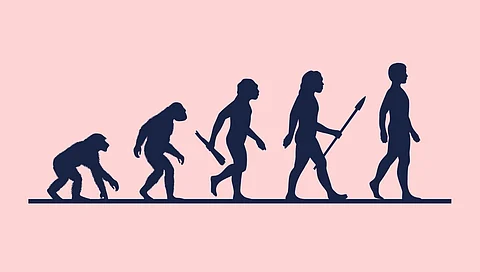

New research challenges the idea that modern humans emerged from a single population, suggesting instead that our genetic lineage traces back to two ancient groups that intermingled 300,000 years ago.
Modern humans likely originated from two ancient populations, with one group contributing 80 per cent and another providing 20 per cent of our genetic makeup, according to a new study published in the journal Nature Genetics.
The paper suggested that Homo sapiens descended from Homo erectus and Homo heidelbergensis, but researchers noted that further evidence was needed to confirm this hypothesis.
Homo sapiens likely first appeared on Earth 300,000 years ago after diverging from their ancestors. However, scientists have long debated whether modern humans emerged from a single population or a network of interacting groups.
“The fossil evidence suggests there may have been several different types of early human in Africa around 300 thousand years ago, but were they all our ancestors or just one of them?” Aylwyn Scally from the University of Cambridge and one of study’s authors, told Down To Earth (DTE).
Previous genetic research had shown that it was possible to infer some aspects of human evolutionary history, such as the size of an ancestral population, from modern genome sequences, Scally explained. “We wanted to see if we could extend that work and use more complex models of human evolution, including more than one population,” Scally explained.
The researchers analysed data from the 1000 Genomes Project, a global initiative that sequenced deoxyribonucleic acid or DNA from populations across Africa, Asia, Europe and the Americas. They then used a computational algorithm called cobraa to model how ancient human populations split apart and later merged back together.
“Cobraa seeks to find an evolutionary model that best explains the observed distribution of mutations in a human’s genome sequence,” Trevor Cousins from Cambridge’s Department of Genetics, University of Cambridge, told DTE.
Their analysis showed that one ancient population contributed about 80 per cent of the genetic material of modern humans. This group was also likely the ancestor of Neanderthals and Denisovans, which later diverged.
Previous studies had shown that modern humans mated with two extinct human species — Neanderthals and Denisovans — around 50,000 years ago. However, even before these interactions, approximately 300,000 years ago, two ancient populations had already intermingled. While Neanderthal DNA makes up roughly 2 per cent of the genome of non-African modern humans, the two ancient populations contributed as much as ten times that amount.
“Mixing between different populations has always been a significant part of human evolution (and indeed other species),” Scally said.
He noted that previous studies had often found relatively small fractions of mixing. For example, after Neanderthals and modern human ancestors interbred around 50,000 years ago, their descendants — who include all non-Africans today — retained about 5 per cent Neanderthal ancestry.
“Our study is somewhat unusual in finding a much larger proportion of mixing: 80 and 20 per cent. However, the same phenomena of migration and general flow were likely involved,” he added.
Homo erectus and Homo heidelbergensis lived in Africa and other regions during this period, fossil evidence has shown.
The researchers called for further studies to identify our genetic ancestors. Scally explained that this could be done using more complex genetic models, incorporating additional ancient DNA evidence.
New fossil discoveries could also provide further insights. “Ultimately, without direct ancient DNA from a much earlier fossil than we presently have, it may be impossible to be truly certain who these ancestors were or what they looked like,” he said.